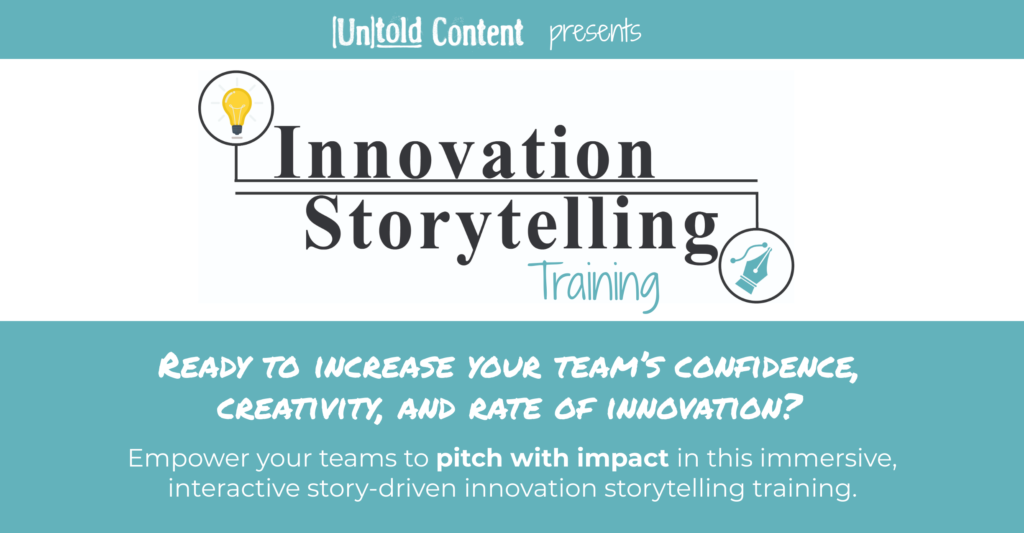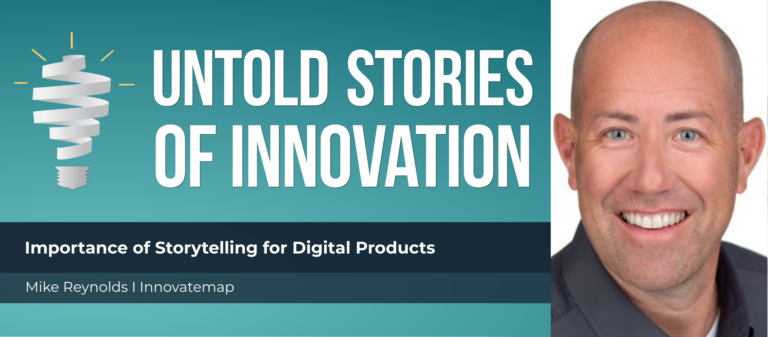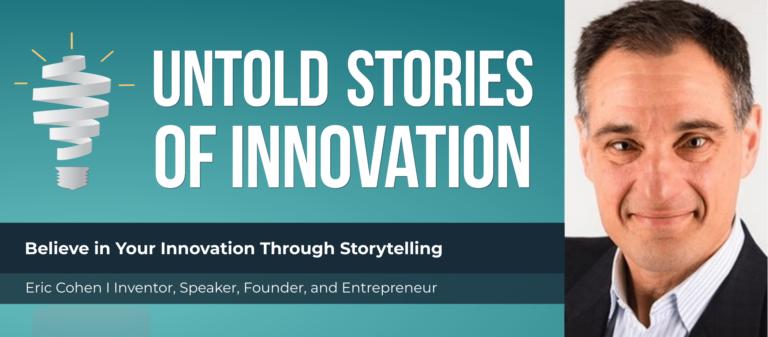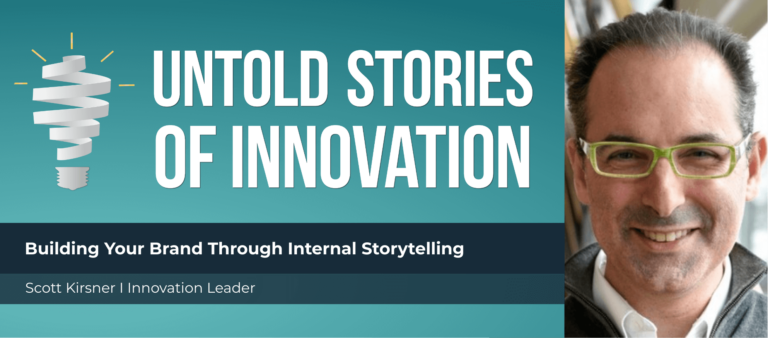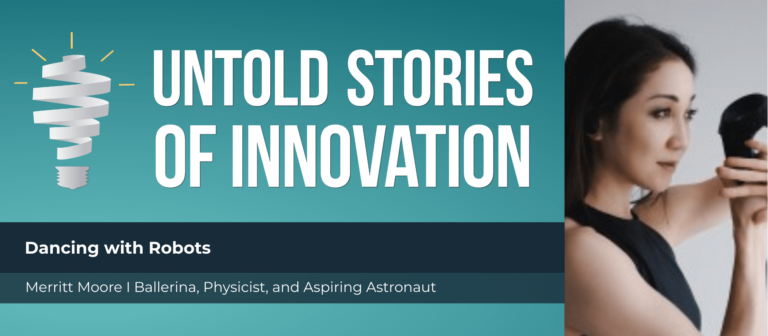Population Health in Global Crises with Dan Lord of Crossover Health
Population Health in Global Crises - Untold Stories of Innovation
“People don't react to just numbers on a page. The only way that comes to life is if we can tell the story around it—tell the actual patient experience with interfacing with our health care. When you have that type of a message and that type of a story, people absolutely jump on board. That's how you can create change.” —Dan Lord, Director of Clinical Programs at Crossover Health
From today’s episode you’ll learn:
Why do stories matter to the innovation process? What values can be instilled in innovators who share stories? How do innovation leaders inspire creators to tell and share their success and failure stories?
We speak with Dan Lord, Director of Clinical Programs at Crossover Health. True to its name, Crossover is a digital health company invested in the coordination and collaboration between providers and their patients in every avenue of care. Our conversation covers population health, tech’s role in our health, and how providers can offer effective and efficient care. In the current COVID pandemic, Crossover is constantly adapting their business model to fit their innovation and public health goals. Check out some of our publications in collaboration with Crossover:
How to Get Workers to Stop Sitting and Start Moving (Employee Benefit News)
Innovating Low Back Pain Management in the Workplace (Corporate Wellness Magazine)
Catering to the Needs of Workers in Big Tech (Monitor on Psychology)
Integrated Physical Medicine Improves Quality of Care at Reduced Cost for Employee Populations (Journal of Occupational and Environmental Medicine)
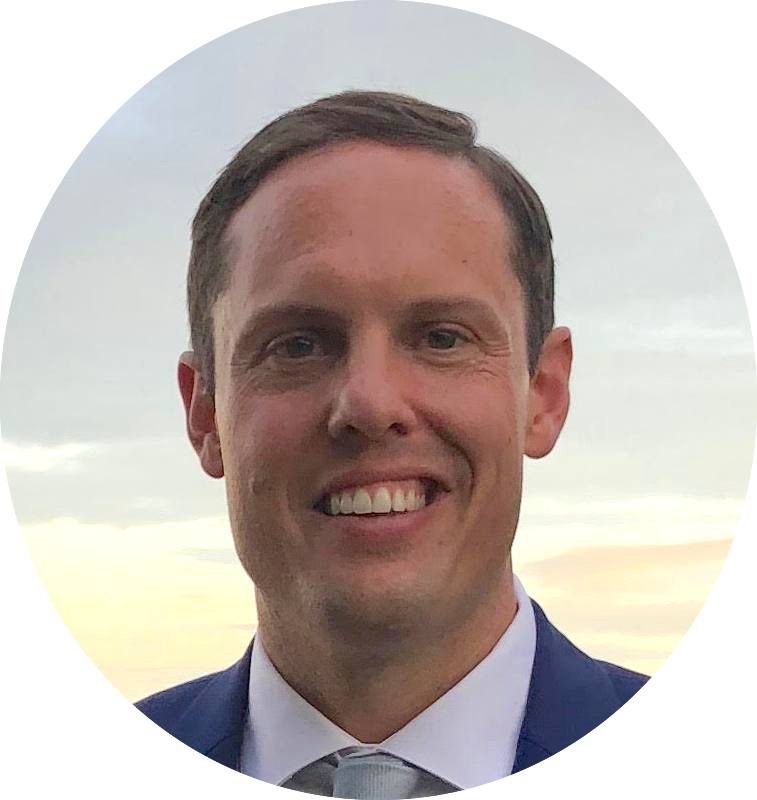
Dan Lord is the Director of Clinical Programs with the integrated primary care medical group Crossover Health. Crossover Health is a next-generation healthcare organization that uses a membership-based approach to fundamentally change the way health care is practiced, delivered, and experienced. By establishing a collaborative model of care, patients and all types of providers can work together to deliver the most effective and efficient healthcare possible.
untoldcontent.com/trainings/innovation-storytelling-training
TRANSCRIPT – Population Health in Global Crises
This episode, Population Health in Global Crises is powered by Untold Content’s innovation storytelling training. Increase buy in for your best ideas in this immersive and interactive, story-driven experience. Where your teams refine storytelling techniques for their latest projects, prototypes and pitches—and get inspired by 25 epic examples of impactful innovation stories. Learn more at https://untoldcontent.com/innovationstorytellingtraining-2/.
Katie: Welcome to Untold Stories of Innovation, where we amplify untold stories of insight, impact and innovation. Powered by Untold Content, I’m your host, Katie Trauth Taylor. Our guest today is Dan Lord. He is Clinical Program Director at Crossover Health, a Silicon Valley based health services provider. You get to work with some of the largest and most incredible tech companies in the world. Dan, thank you so much for being on the podcast today.
Dan: Well, it’s a pleasure, Katie. You and I have known each other for a few years now and have done some amazing work in the healthcare space. So, excited to share some of the cool stuff that we’ve worked on and some of my story. So thanks for having me.
Katie: Definitely. We have to start with the strange world that we’re living in. How are you doing? How is Crossover? How are your clients? What’s new? Obviously we’re all working virtually at this point due to the COVID pandemic. So, yeah, I’d just love to connect for a second, hear how things are going.
Dan: Yeah. Well, thank you for that. Very strange times indeed. And being in the health care space, it’s directly impacted our business. And, so people know, we are a direct primary care solution that includes not just physicians and nurses, but also a whole care team that includes musculoskeletal care, physical therapists, acupuncturists, chiropractors that work closely with physicians, as well as our behavioral health program that has several providers from psychologists, psychiatrists as well as health coaches. And so that’s our core team. And, you know, we did a lot of in-person care in these wonderful health centers that we built. And we’ve already started to move to digital health and virtual care and all of that. But the COVID phenomenon, crisis, etc., has done a huge — made a massive impact to the speed at which we’re transitioning from an in-person clinic experience to a digital health experience. And so that’s been a wild ride the last four weeks, you know. And then also designing new care management tools. So if we have any of our patients that get COVID, how can we manage them? You know, of course, if they are, you know, hospitalized at that level, that’s slightly different because we’re primary care. But as you know, there’s a large cohort of people who are not at the level of going to the hospital, but need to be closely monitored. They need to be protected. They need to know the right places to go to protect others and themselves, etc. So we’re building a lot of tools and communication and care to help those people, as well as outdoor testing and breathing clinics and all these new services to react to the climate. So we’ve been all hands on deck for the last month. It’s been totally crazy. But it’s exciting at the same time. And I know that sounds weird. I don’t want to make light of it, but it’s exciting because we get to do really great work that affects each patient and we can play a role in this whole terrible issue. So, yeah, we’re doing great.

Katie: Good. I’m so glad to hear that. I can’t wait to talk more about some of the innovation stories coming out of all of that work. You know, about, I’d say a year or two ago, your team at Crossover collaborated with our team at Untold Content to produce some of the first program designs for Crossover around telemedicine. And so I really — I view Crossover, and I think this is just true for the employer sponsored care space, but Crossover is certainly a thought leader in this space on the cutting edge of trying to incorporate digital health into a sort of hybrid model. So understanding that people do want to physically see their providers, but also they — there’s going to be an increased need for telemedicine, for telemedicine that works well. And your background is physical therapy, right?
Dan: Physical therapy. Chiropractic is my base. And so, yeah, that’s kind of the road that took me to this certain position. When we started working together, it was strictly in the musculoskeletal arena and kind of designing some of those care pathways and some of those processes, doing some of the research around our care model. And then you’re correct, designing some of the actual telephysical therapy services, which some people think that sounds kind of crazy. Because people identify with that service and chiropractic as a modality. And it’s interesting because it shifted those professions into, “Hey, we’re not just a modality. You’re not just gonna go in and get a manual treatment. We’re an expert in how you can decrease pain and strategies that you can do to self maintenance and exercises that you can use on, you know, in your own home by yourself without a physical therapist to solve some of your biggest problems.” So it’s definitely interesting. And there’s a big innovation story there as well.
Katie: Absolutely. And so it’s neat to see that the preparation work that you and your team were so diligent about so long ago, it’s now — there is a critical and urgent need for it.
Dan: Big time. Yeah. We were so lucky to have the opportunity to do that work because we were ready for this crisis. And obviously, virtual physical therapy doesn’t solve COVID, unfortunately. But there are tons of people that are in pain that can’t go and get help right now. There are tons of people — back pain didn’t go away with COVID. And there are a lot of people that need our help and we’re able to help them because of the work that we did.
Katie: And also, are you seeing an increase in telemedicine visits for primary care in terms of being able to reach people in their homes if they start to fear that they do have COVID-19 symptoms?
Dan: Absolutely. There’s a few different avenues, too. We’ve developed a proactive outreach program where people that are at high risk or people that may have been in contact or, you know, people that are concerned or, you know, or questions about testing. Our nurse team is doing some proactive outreach and communicating with all those members so that they know what the next step is. There’s been a huge increase in digital health at large at Crossover. And it’s really, you know, it’s great because we’ve always seen that this is the right tool. Whether we’re in the COVID situation or not, having a digital front door and incorporating technology into your care pathways, it’s obviously the future, but it’s really about the right tool at the right time. We can provide better care and augment what the physician can do, augment what the PT or the behavioral health therapist can provide. If we can use not only our physical care, our one on one, not even — I’ll even actually further define or separate some of this work as synchronous and asynchronous. So synchronous being, you know, you’re still using a provider’s time to see one patient and you have to do an incredible amount of communication and evaluation and treatment and everything during that synchronous visit, whether it’s in person or it’s a video visit that you turn on. There are clear limitations to providing all care that way. If you think about how we communicate in life in general outside of health care, it’s through asynchronous means. It’s an email. It’s a text message. It’s a chat. It’s a group forum. It’s social media.
Katie: Yeah, of course.
Dan: Right. And that’s how the world communicates. Health care just needs to catch up. So what we built is a tool that combines synchronous and asynchronous in a thoughtful way so that when you can gain efficiencies and when you can leverage different technology and tools for your patients, you can expand what you can do a lot more than just the visit. And that’s what we’re seeing a big difference in, the communication and messaging between our primary care team and patients has been a massive increase, it’s exponentially increased with COVID. But it’s funny, we were planning for that all along. It just happened much quicker.
Katie: Yes, absolutely. There was just the sort of external force, if you will. What’s incredible to me, for those listeners who haven’t experienced Crossover Health or a model like Crossover, it’s an employer sponsored care service. And so employers, some of the biggest tech companies in the world and other companies as well located across the nation, will contract Crossover Health to provide onsite or near site primary care clinics, as well as digital health and an onsite clinic. Could you — I’ve had the fortune of getting to experience Crossover Health, several Crossover Health clinics, and I’ve walked through them and seen them. So could you describe, Dan, what those are like and how they’re designed?
Dan: Yeah, absolutely. At the very tip of the spear, our goal is population health. And so, like I was mentioning before, we are transitioning, I think, and have transitioned from being a clinic builder to really a population health manager. And the difference is we have, you know, we hire people to see a one on one care. There’s a fee for our service. The insurance company will bill you. That kind of thing where, you know, that’s where the current health care model is. To — all right, not only do we, in order to be a population health manager, not only do we have to meld digital health with in-person clinics, but we have to have a new business model to sit that up top. So I — the clinics, without the context of the business model, because it doesn’t make sense. If we practiced the way that we practice now in the community, we would go out of business because we’re — our model is about outcomes, it’s not about the services that we provide. And that’s how everyone else gets paid. And so our design of our clinics and the design of our care model and the design of our digital tools are all to help improve the population’s health. And so if you think about that as a platform, now you can design the care plan to solve that patient’s problem. And the beautiful thing, the thing that makes me wake up every morning and I’m happy, is because the provider and the patient are now on the same team. And it’s never like that. It’s never been like that before. At least in the United States. Any clinic you walk into, and I don’t care if you’re walking into a chiropractor or an orthopedic surgeon or a neurologist or your primary care physician, that business makes money based on the services they provide. And so there’s always a conflict of interest in the insurance company, the billing, the services that you provide. And instead, to what you were saying, Katie, we can contract directly with payers, and in this case self-insured employers, in order to say, “Hey, let’s do this differently. Let’s design the whole care pathway to solve a problem as efficiently and effectively as possible. And, by the way, have a wonderful patient experience.” And so in order to do that, we have to design a beautiful space that’s welcoming, that also elicits integration and collaboration between the care teams. So right from the start, our physical designs — everybody’s sitting next to each other, there’s a bullpen where everybody’s collaborating, where we can get data from our data warehouse on all the different patients that we’re seeing in our patient panel, and we can practice a model of population health by getting those care insights and delivering on them and making sure patients know the next step to take to improve their health and really getting that patient to the right care as soon as possible. There’s really low hanging fruit out there. For example, my background is physical therapy and chiropractic, of course. And there’s lots of unnecessary surgeries. There’s lots of unnecessary imaging. There’s lots of unnecessary pain medication. There’s lots of unnecessary treatment and overutilization. And so if we simply say, “Hey, here’s what the evidence says, here’s our therapeutic alliance. Let’s get on this plan together and let’s solve your problem.” The rest takes care of itself. It’s really wonderful to practice that way. Physicians get into the practice of medicine to help. And when you have a platform like this, it makes everything so much easier. So the clinics are designed to support this and our digital tools, our Crossover platform is also designed to do this and integrate seamlessly so that, hey, if you don’t need to come into the clinic, if you just can solve your problem with a couple of questions, we have a really easy way that you can reach out to your provider. Not a random person, you know, from a telehealth company. But I want to talk to my physical therapist, my knee’s starting to hurt again. You can send a quick chat. You don’t have to do an entire appointment and drive all the way into the clinic, spend four hours if it’s like you can solve your problem with a couple of questions to your PT who already knows you, already knows your background. You know, we’re designing for efficiency. We’re designing for experience. It’s exciting to do the right thing in health care. And I think we’re still the only — one of the only groups that’s actually doing this. So that’s why — it’s why it’s exciting.
Katie: One of the coolest projects by far that we got to engage in together was to study that integrated design. You called it the bullpen. And I love that image because when you walk into a Crossover Health clinic, essentially patient — what do you call them?
Dan: Treatment rooms.
Katie: Yeah, of course. Okay. So the treatment rooms are sort of along the outside of the building and in the middle of the building is a bullpen. And this is where chiropractics work alongside acupuncturists and primary care physicians and nurse practitioners and so every — and behavioral health specialists as well, and also health coaches. So there’s this integrated collaborative hub in every clinic. And it sounds like you’ve mimicked that same model and the digital interfaces that you’ve created where if a patient comes in to their primary care doctor with back pain, that primary care doctor collaborates with your physical medicine team. And in the community, it’s such a fragmented experience for someone who has back pain. If they go to their primary care doctor, they might get referred to an acupuncturist, they might get referred to physical therapy, they might get sent for imaging or just go on pain medicines. And those doctors aren’t usually talking with one another. And so there’s a lot of back and forth and sometimes miscommunication and the patient is sort of stuck in the middle of it having to navigate it. And what’s amazing to me, when we got to work together on — particularly on the project that got published, it was really about studying how Crossover’s model, because of the way it integrates primary care and physical medicine specialists together in one space, that you’re able to reduce costs and get patients to feel better, faster. And at the same time, we didn’t study this aspect, but we knew based on a lot of feedback from patients, that the communication barriers and all of that headache was reduced as well. And that study was published in the Journal of Occupational and Environmental Medicine. I’m so proud of that work. Essentially, we were able together to discover that your patients got better six days faster.
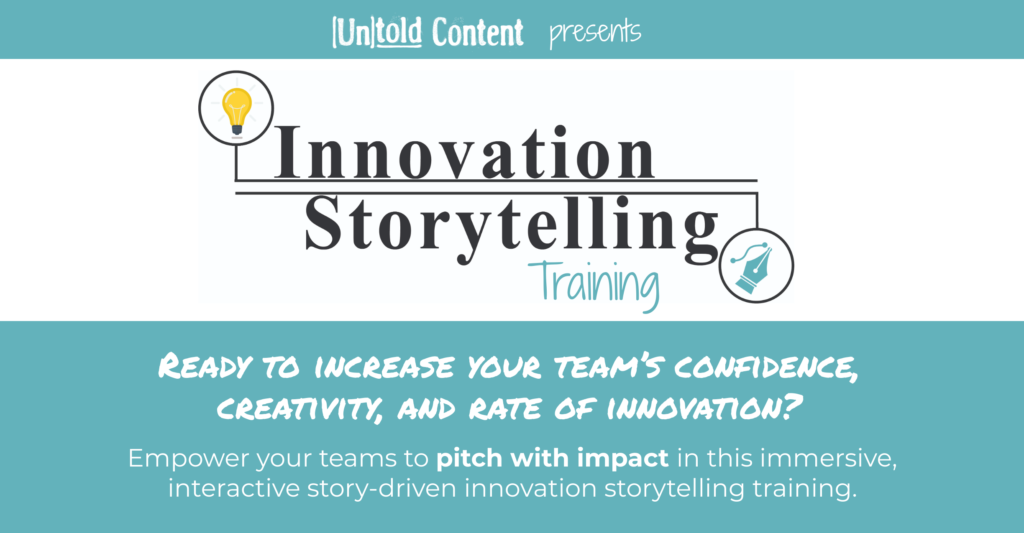
Dan: Right. And I’ll take it up another notch. You know, in the community, there’s turf battles on top of it. There are — so the siloed care that you described is even further challenged with the fee for service model and everybody like, that’s my back pain patient. It’s not collaborative at all. So even if you could communicate and collaborate, it’s hampered. So the model really facilitates that integration and collaboration and problem solving. So that, you know, your team can really problem solve differently than if you go anywhere else. And you’re right, it’s not only the patient’s perspective and the increased communication, but providers have more satisfaction with their practice.
Katie: Yes.
Dan: They’re stimulated every day and they learn from each other. And, you know, the best part about, as you described, this saves money. Doesn’t mean that we’re adding more treatment or adding more. It’s, “Hey, we’re going to figure out that person’s back. What’s the right tool for them? Are they — is it a core stability issue? Do they have fear of pain? Is there a emotional or mental health component? Are they depressed and they have back pain?” Well, now we can collaborate directly with the mental health provider or a health coach to help facilitate engagement, help facilitate adherence. And it’s just, it’s magical. If you put the right people together and they’re incentivized to work together, it’s great. I’m with you.
Katie: Well, one of the beauties of the content strategy, too, after that was published, we were able — one of the data points in that publication was the compared use of opioids in the community compared to Crossover Health patients. And while 20 percent of patients in the community were prescribed opioids because of musculoskeletal pain, at Crossover it was only 2.8 percent. So it was this drastic difference. So I loved writing and collaborating with you on those thought pieces where we were saying, “Hey, there’s a potential here that an integrated model of care where you put different types of providers, different specialties, working alongside one another, that this can have a drastic impact on the opioid epidemic as well.
Dan: That’s right. That’s exactly right. And that was also my favorite part of the paper. When you have a physician with — that can act as a quarterback and they have a team around them. It creates a massive difference in how they are able to practice medicine. Different people would react to acupuncture and chiropractic and physical therapy. And now we can — we have a standard care pathway that sends people to the right person. And that physician, you know, usually, to your earlier comment, is siloed from all those other options. They don’t know what’s evidence based chiropractic. What does the research say on pain management in acupuncture? How can a physical therapist treat acute low back pain patient? What are options if you don’t have medicine? These are all things that are not even part of the conversation at Crossover. The patient immediately goes to conservative care and we have conservative ways to modulate their symptoms. Whether it’s acupuncture or different positional work that the PT can do or different manual therapy that the chiro can do. There’s the right tools in the tool box so that we don’t need to rely on pain medication as much. And even if we do, we have the physician and the therapist working shoulder to shoulder. So we use it as a bridge so that patient can get active sooner instead of using it as a solution. So, very exciting. And, you know, again, we’re not going to solve the opioid crisis, but we can be part — a big part of that solution. We can manage pain much differently because there’s just better tools in the toolbox. Instead of just a prescription pad, you have a team.
Katie: How do you think that the COVID-19 pandemic — and I know Crossover has a national reach at this point — but if every model of care that the U.S. citizens experienced were similar to Crossover’s model, how do you think the pandemic might be different? That’s a big what if.
Dan: Come on. We’d have cured it like a month ago. No. Well, you know, I can tell you that primary care has a massive role to play. We rolled out this concept of pandemic primary care to all of our clients. And I started to speak about it, where we have this proactive outreach and we have testing centers and we have outdoor testing and we have breathing centers and —
Katie: What is a breathing center? Could you tell me more about that?
Dan: Sure. Well, obviously, shortness of breath is one of the key elements or key symptoms. And this is all outdoor, of course, and safe. But there’s different procedures, medications, strategies and different things that the physicians can apply to help some of these patients, short term and long term, cope with the symptoms of COVID and prevent them from having urgent care or prevent them from going to the emergency room if they don’t have to. So it’s really helping to unload or decrease the volume going into hospitals. So we know that that is a huge issue. And so there is a cohort of people that aren’t as acute that can be treated in a manner that’s not in the hospital. And so that’s where primary care can really make a big impact. Along with making sure that people who, you know, people who haven’t gotten COVID are taking all the right cautious procedures and know how to protect themselves. And, you know, if we can also keep people healthy, keep people active, keep people, you know — whether they’re needing medication or need to continue their exercises or their active lifestyle, keeping the population healthy, too, helps us cope with COVID as well. So the primary care platform plays a key role in whether we can impact the overall epidemic or pandemic. Hard to say, but without a doubt you can manage things better in a population health driven company because we’re already doing the types of things like proactive outreach and care management for those at risk. We’re already looking at how we can make our population healthier. We’re already looking at how we can do that in a digital way. And so that’s kind of our swing.
Katie: Yeah. Absolutely. Can you tell me — you know, we’ve talked a lot about COVID and telemedicine and some of the origins of Crossover and its model — could you tell me a little bit more about storytelling and the role that it plays really in any aspect of your work as a leader at a digital health startup? No longer really a startup, I guess.
Dan: Yeah, no it’s true, I think we’ve moved past startup. And our leader, Scott Shreve, our CEO and founder, talks a lot about our agility and our anti-fragile company, that we need to be able to be flexible and move and respond to the current climate. And I think that’s why we’ve been successful, is that’s how he’s built the company. We were able to pivot quickly, as you know. And it’s really turned out well.
Katie: Yeah. So tell me, you know, Scott, I think, is a powerful storyteller. I know that you are as well. Tell me a little bit about how storytelling is part of the culture at Crossover.
Dan: Yeah, it’s a great question. I think in order to do hard work, you need buy-in. And I think Scott’s — one of his superpowers is storytelling and engaging, you know, all the employees, everyone at Crossover on a common goal, even if it’s really, really hard. And in order to do that, in order to get buy-in, you have to present a story. And people have to really engage with that story, whether that story is how we’re treating patients or switching to virtual care and how we can hit the triple aim in health care, you know, he really sets the tone. And again, if we want to sell this, if we want to actually get people to buy into our concept, that has to be told as a story. It has to be a content strategy around how we convince people that this is the right thing to do. People don’t react to just numbers on a page. We can show you data, cost data, things like that. But the only way that comes to life is if we can tell the story around it, tell the patient experience around that, tell people’s actual experiences with interfacing with our health care and how it changed their life. Discuss, you know, how this affects providers’ happiness and this type of practice style will make you excited again to be a provider. You know, we’re against provider burnout here. And we want to actually facilitate happier, healthier, stronger providers. And when you have that type of a message and that type of a story, people absolutely jump on board. And that’s how you can create change.
Katie: Yeah, absolutely. I know I’ve seemed like a total fangirl this entire interview, but the truth of it is in our collaborations with Crossover, we did a lot of research, a lot of literature review work in medical publications and looked at other models of care in order to compare them with what you guys are up to. And the problems and the challenges that exist in the U.S. healthcare system are so great that they’ve been acknowledged, you know, in a widespread way. And to me, even though I might seem like I’m just in a total crush with Crossover in this interview, it’s because you really have found an approach that tackles some of those challenges head on.
Dan: You know, Katie, I have to say, right back atcha. We’ve had a wonderful time getting to know Untold Content. And your team is full of absolute rockstars, visionaries, leaders, teachers. And we’ve been able to not just develop, you know, content that we are publishing, which, of course, super exciting, but we are able to, you know, tell the story of what we were trying to build, which, you know, we could leverage to get all of our providers on the same page, get them excited about what we’re going to do and then actually execute on it. And you guys played a big role from the start in the research and development, in the storytelling, in the strategy. And so it’s been a mutual fandom.
Katie: Well, you know, it’s — when that chemistry happens, where you’re able to pair a powerful writer or storyteller or designer or data visualization artist with the right subject matter expert, then that’s where magic can happen. And when there’s cultural fit, I think that matters as well. And I loved how every clinical subject matter expert who we were able to collaborate with at Crossover was passionate. They were ready to share their insights. They were ready to learn the latest research and share that. And really hungry to be able to communicate that and represent the entire organization in that way, too. And some of the publications, you know, landing in trade journals and in academic journals and in the news around the work that you guys were doing was so well-deserved. And I think too few clinical experts are able to, not just clinical, I should say any kind of expert, is just too few of them are able to make that time to look up for a second from the lab bench or from the patient and be able to say in a bigger microphone, “Hey, here’s a new way of doing something. And even though what I’m saying is complex and there are a lot of different nuances to it, I’m still going to make the time to share thought leadership around it because I believe that it’s going to make the world a better place. It’s going to inspire more models like what we’re doing or more approaches like what we’re doing.” So that’s something I just — I think when that chemistry works well, it really creates so much — it builds so much creativity and output.
Dan: We appreciate that. And internally, what we’ve kind of joked about is you’re able to take our clinical jargon and, like, dorky physical therapy vision and transform it into a really thoughtful story that is relevant and meaningful for our audience. So I really appreciate that.
Katie: Well, you know, another aspect of it, too, that I think can’t be understated is the data driven and evidence driven nature of the collaborations that we were doing, the publications we were writing together. We found — there was an article published in early, I believe it’s early 2019, about stealth research — and I’ll link it in the show notes — but it essentially was a study that looked at a bunch of different health care unicorns. So startups that were valued at a billion dollars or more. And how many of them actually had published clinicians or published scientists on their advisory boards and how many of them were actually publishing their findings and the data to support their products or services or their model. And essentially, again, as you can probably tell from the title, it was stealth. There weren’t very many startups who were prioritizing that. And it’s, to be fair, very hard to do because it takes a long time to publish in a medical journal or a scientific journal. The peer review process can be grueling. And yet the ones who are prioritizing it, really, there’s a lot more at stake to making sure that you are making time for that, because I think in a post-Theranos world, it’ll be an expectation and not an option, right. Investors — more and more investors are asking, “Where’s the data? Where’s the proof?”
Dan: Right. And we — that’s correct. It should be that way. We’re not talking about a social media app or some communication tool that you can kind of build as you fly it kind of thing and get your minimum viable product to market and then iterate on that. That’s how — I’m in the middle of Silicon Valley — that’s how most things work. And you find a niche and then that niche expands. In healthcare, it’s hard because that model can break really easily. However, the reason that that article was written, and I think the reason that it got a lot of publicity, is you had a bunch of health care companies that were acting like Instagram and pricing themselves like they were, but never making sure that they were doing the hard work to prove that their digital solution actually worked. And in health care that’s needed. You can’t invent a new drug and not go through the hoops of the FDA and go through the right research and all of that. And so it’s the same for a digital health startup. If you are proposing a new solution, you’ve got to stand on evidence. And I think that’s what’s separated Crossover from a lot of our competitors is that we’re doing the hard work to prove our model, to publish on our model, to get third parties to benchmark our model. You can’t argue with clear data and evidence and research. And the — it stood the test of time, to be honest. Right. There have been a lot that have flashed in the pan, but if you don’t have that hard work to stand on, it’s hard to continue to move forward.
Katie: Again, so inspired by everything you guys do. And I am so — I can speak for everyone who you impact directly and who you hopefully will impact in the future, that we’re grateful that you are embracing digital health, that you’re setting, you know, a new horizon when it comes to how health care is delivered and provided and the experience around it. So I wish you — I’ve just been thinking about you, of course, a lot, and your teams as you guys are fighting this pandemic and being there for us. So thank you, Dan, and to the entire Crossover team, for being on the frontlines and for creating new ways that we can get the services that we need, especially in times like this.
Dan: Thank you so much, Katie. We’re excited about what we’re building. And it’s always been a pleasure to work with you and your team. And thank you for having this awesome conversation.
Katie: Yeah, absolutely, Dan. So tell us where people can find you and Crossover.
Dan: CrossoverHealth.com is the best place to go to get all the latest and greatest from Crossover. I’m on the social channels. I’m on LinkedIn, I’m on Facebook, I’m on Instagram. You can find me by my first name. I don’t have any crazy handle or anything, but please reach out if anybody has any questions. I’m definitely on all of those channels and would love to hear from you.
Katie: Dan, thank you so much. And stay safe out there.
Dan: You too. Stay healthy.
Katie: Thanks for listening to this week’s episode. Be sure to follow us on social media and add your voice to the conversation. You can find us at Untold Content.
You can listen to more episodes of Untold Stories of Innovation Podcast.
*Interviews are not endorsements of individuals or businesses.

